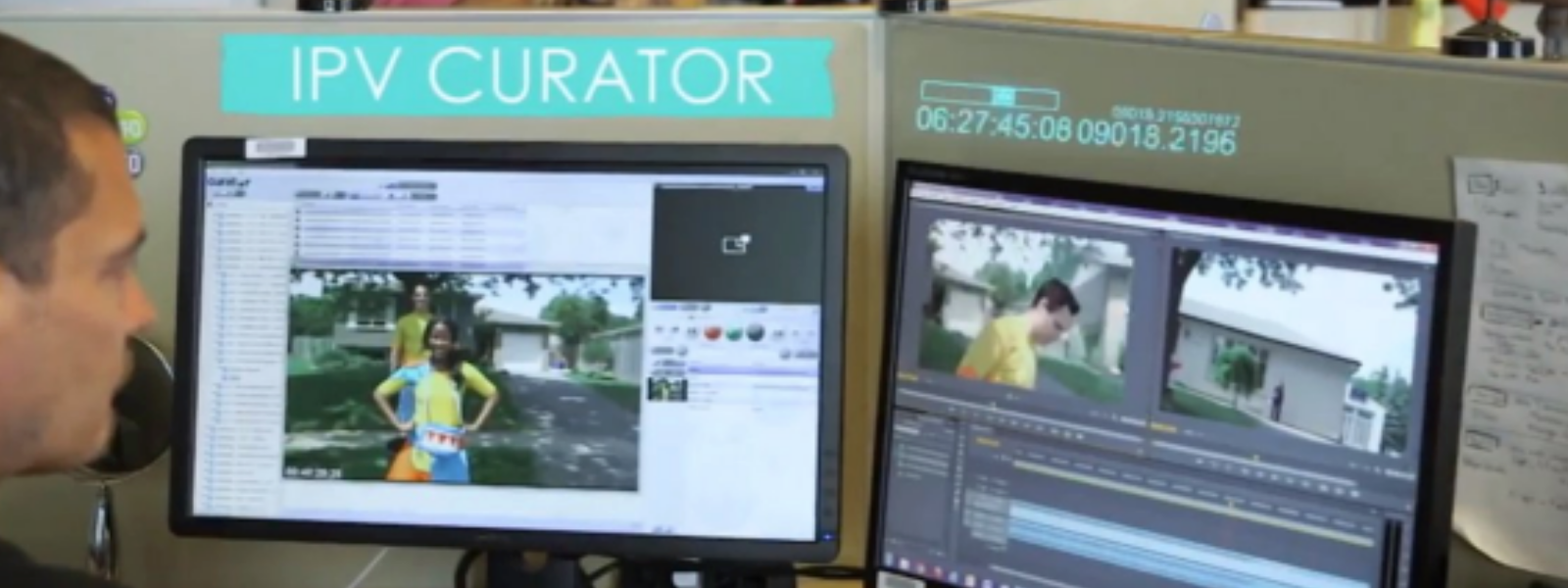Customer profile
One of the oldest French-language television channels in Canada, Télévision Francophone de l’Ontario is an independent agency of the provincial government of Ontario. Known today as Groupe Média TFO, the organization has two production studios in its Toronto headquarters and is recognized as the go-to resource for Canadian – and international – audiences seeking high-quality educational and cultural content in French.
The organization’s channel, TFO, is available on multiple Canadian broadcast services and publishes a huge amount of content on its dedicated website, as well as through social media.

TFO’s ‘content factory’ in Ontario, Canada
Challenges for TFO
Today’s consumers are no longer just watching programming on linear services on the main screen in the house, especially kids and younger generations. In order to meet the demands for more content, delivered faster to several platforms at once – whether for broadcast, online or social media – TFO needed to overhaul its production workflows.
The new production infrastructure had to be able to meet the need to capture, edit and output more content,, while at the same time be fast and efficient. TFO wanted to be able to send people out into the field and have content they were shooting on air, or published, within hours. Gone are the days where news sources would simply produce a daily show. Topical stories or current events need to be made available to audiences as soon as possible after they take place. If they’re not, consumers will simply go to another outlet.
Any content or programming also had to be made easily accessible to everyone, whether in-house or freelance directors, producers or journalists. As with any production infrastructure, integration with third-party systems was also key – TFO needed to retain a well-established Louise asset management platform from Pro Consultant Informatique which looks after the channel’s contracts, media rights and schedules. The new production infrastructure needed to be tightly integrated with Louise, as well as TFO’s Adobe Premiere Pro editing system.
Solution
TFO’s technical team worked closely with systems integrator Applied Electronics to develop a new workflow at the core of its production processes. IPV’s Curator system was installed to provide the fundamental production asset management layer. Its main role is to make it easy to manage the flow of content around the entire infrastructure, while also providing seamless integration with the Louise business and Adobe editing systems.
Immediate content editing
To meet the demand for more content, TFO is now able to use Curator to support shooting content on multiple devices. It bolstered its acquisition workflow, which had consisted of Sony P2 camcorders, by adding Canon EOS C300s, as well as iPad shooting kits, which let them capture video, quickly edit clips and deliver it directly to the Curator network using an app from Signiant.
After shooting, content is made available for editing using a frame-accurate Curator Proxy before the ingest is even complete. This means a journalist can start working on their programming immediately, while the story is still new. To support this kind of immediate publishing or editing functionality, TFO went from their original setup of three edit suites to more than 50 – each running a Curator-supported Premiere Pro system.
Proxy-based workflows
The use of proxies is one of the Curator system’s key benefits to an organization like TFO. Packages of programming can be completed at one of their 50 desktop suites by an editor using low resolution proxies and a render farm, which is attached to the network and managed by Curator. This conforms the content and automatically prepares it for distribution.
IPV was the first technology provider to introduce proxy-based workflows to the production industry and is a recognized leader in the technology. In a tiered storage infrastructure, using Curator proxies can save up to 98% of a single tier’s capacity, saving money as well as speeding up finding material, editing and archiving processes.

Seamless editing integration
Curator-managed content is easily made available to editors through an integrated panel within Premiere Pro. Content recently shot and ingested into the system can be streamed into a timeline for editing, and users can easily find assets in Curator for inclusion in the project.
Producers never need to think about delivery formats. Curator manages all of the ‘work in progress’ material on a network cluster of Isilon nodes. Alongside storage, the production and render farm are completely format agnostic.
Content is created in a standardized workflow, then delivered to whatever platform is appropriate. The delivery – transcoding, repacking of the metadata and so on – is handled automatically by Curator, according to TFO’s predefined rules.
Control room content management
As part of its production infrastructure overhaul, TFO also built a new control room for its two production studios. The way it’s been integrated means it can be managed by two operators alongside the detector and PA.
If any assets need playing into a production, the operator can easily call it up from Curator for inclusion. The programming is recorded directly to the server, and graphics and captions are created in Adobe, again all controlled by the Curator system.
By creating studio content in this way using Curator, operators can easily clip up recordings and assemble edit an entire show at the same time as they’re shooting. It allows them to complete programming alongside the studio shoot rather than needing to do it afterwards, making the process from shoot to edit and publish much faster and more efficient.

Outcomes
To cope with their need to deliver more, higher-quality content across multiple platforms, Groupe Media TFO needed to increase their overall level of productivity without having to invest a lot more into personnel or resources. Using IPV’s Curator platform, TFO has been able to implement new ways of working with seamless content movement and interchange across the whole infrastructure.
The production asset management system’s tight integration with Adobe means editors, producers and journalists can start working on content immediately, speeding up the overall editing process.
Within just the first few months of using Curator, TFO’s freelance bill was reduced by 40% while the amount of content produced and distributed has increased by 50%. TFO’s executive producer, Nadine Dupont described the new workflow as ‘genius.’
“Television can’t be done the way it was 30 years ago. We have to access to content virtually instantly, and that impacts on our ability to put stories together. We want to be in the here and now: we cannot consider taking three or four weeks to do a piece.
IPV’s Curator has given us this kind of immediacy and it’s exceeded my expectations.”
CTO Éric Minoli added: “the IPV team was active in configuring the technology to work for us, and for helping us make the transition [to a new way of working]. They went through every possibility of what might happen, and what we might need to do.
“We pushed to increase output by 50 to 100%. That was why we had to find a better way of working, and with Applied Electronics and IPV we’ve achieved it.”
Ready to take a closer look at Curator?
Book your time with one of our experts

.png)